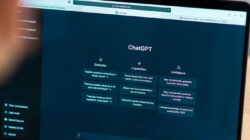Understanding YouTube content has never been easier thanks to Google Bard’s latest AI integration. This innovative feature revolutionizes the way users engage with videos, offering a deeper level of comprehension and interaction.
Bard’s Enhanced Understanding of YouTube Videos
Google Bard unveiled a groundbreaking AI chatbot capability tailored to decipher YouTube content, addressing users’ desires for more profound video engagement. According to Mashable’s report on Friday (24/11/2023), Google stated, “We’re taking the first step in Bard’s ability to understand YouTube videos… We heard you want deeper engagement with YouTube videos.”
Bard elaborated, emphasizing the extension of YouTube’s capabilities within its interface to comprehensively interpret video content. Users now have the advantage of posing intricate follow-up questions and requesting detailed summaries about a specific video before initiating playback.
Evolution of Google’s Chatbot
Google’s commitment to enhancing Bard’s functionality has been evident since its launch earlier this year. Notably, in September, Google introduced a suite of augmented features across various platforms like Google Flights, Maps, Drive, Docs, Gmail, and the YouTube browser extension. These enhancements empower Bard to extract data directly from associated websites, amplifying its capabilities.
Moreover, Google has fortified Bard’s reliability by providing users with tools to verify responses, reinforcing trust in the chatbot’s accuracy. Subsequently, the company rolled out an upgraded Assistant with Bard in October, widening accessibility by extending Bard’s usage to teenagers.
Implications and Future Prospects
While this advancement is lauded for its potential to transform user experiences, concerns have surfaced regarding its impact on online video educators and the overarching privacy and ownership concerns related to generative AI.
The integration signals a paradigm shift where Bard, under Google’s purview, could potentially undertake various tasks for users, extending beyond content consumption.
Google’s strides in empowering Bard underscore a trajectory where seamless interaction with digital content becomes an integral part of users’ daily experiences.
By bridging the gap between users and YouTube content through Bard’s heightened comprehension, Google continues to redefine the landscape of AI-driven engagement.
This step forward, while promising, beckons further exploration into the evolving relationship between AI capabilities and user interaction, paving the way for an enriched digital ecosystem.







